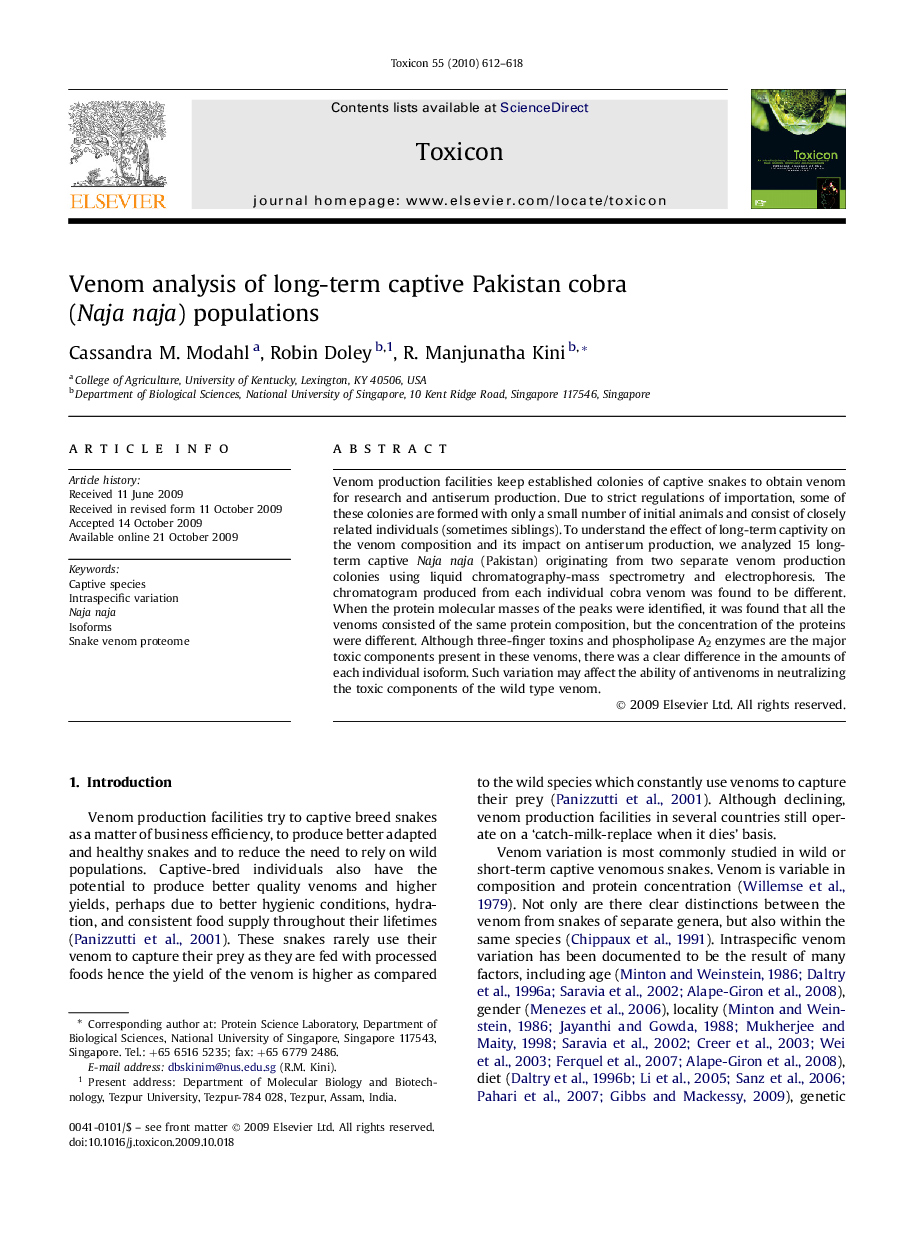| Article ID | Journal | Published Year | Pages | File Type |
|---|---|---|---|---|
| 2065361 | Toxicon | 2010 | 7 Pages |
Venom production facilities keep established colonies of captive snakes to obtain venom for research and antiserum production. Due to strict regulations of importation, some of these colonies are formed with only a small number of initial animals and consist of closely related individuals (sometimes siblings). To understand the effect of long-term captivity on the venom composition and its impact on antiserum production, we analyzed 15 long-term captive Naja naja (Pakistan) originating from two separate venom production colonies using liquid chromatography-mass spectrometry and electrophoresis. The chromatogram produced from each individual cobra venom was found to be different. When the protein molecular masses of the peaks were identified, it was found that all the venoms consisted of the same protein composition, but the concentration of the proteins were different. Although three-finger toxins and phospholipase A2 enzymes are the major toxic components present in these venoms, there was a clear difference in the amounts of each individual isoform. Such variation may affect the ability of antivenoms in neutralizing the toxic components of the wild type venom.
